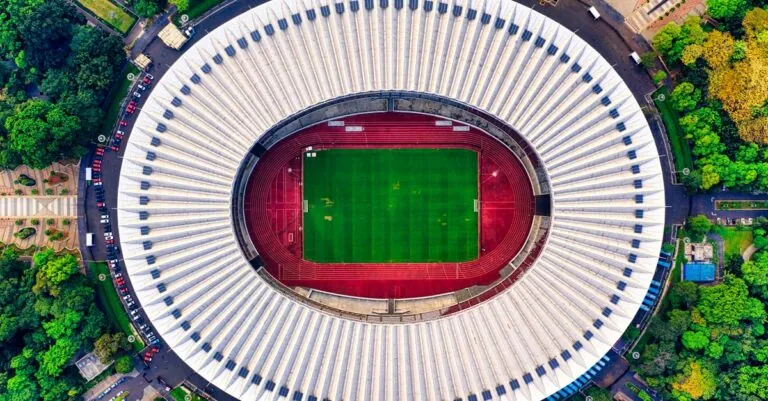As humanity reaches for the stars, space lander technology is the unsung hero behind our cosmic dreams. Imagine a high-tech chariot that can safely navigate the treacherous terrain of alien worlds. It’s like a lunar rover but with a flair for the dramatic. This tech is paving the way for exploration, research, and maybe even a cosmic vacation (who wouldn’t want a selfie on Mars?).
Table of Contents
ToggleOverview of Space Lander Tech
Space lander technology plays a pivotal role in humanity’s journey through the cosmos. This technology enables safe descents, landings, and surface operations on various celestial bodies. Innovations in propulsion systems, navigation, and landing gear all contribute to its effectiveness.
Robotic landers, such as those used by NASA and other space agencies, perform crucial functions. They gather data, conduct experiments, and deliver instruments necessary for scientific discovery. Features like autonomous landing capability enhance their reliability in unpredictable terrains.
Advanced materials improve lander durability, allowing them to withstand harsh environments. Heat shields protect instruments from the intense heat during atmospheric entry. Moreover, the use of solar panels ensures continued operation without the need for refueling.
Future space tourism relies heavily on advancements in lander technology. Spacecraft designed for human passengers must prioritize safety and comfort during landings. Various companies are investing in innovative designs to facilitate this new era of exploration.
Mars missions exemplify the importance of efficient lander tech. The Mars Perseverance Rover provides insights into potential microbial life and prepares for human exploration. Successful landing is crucial, as demonstrated by previous missions that faced challenges due to atmospheric entry and surface conditions.
Space lander technology continues to evolve, driven by the desire for deeper exploration. Each development opens new possibilities and enhances our understanding of the universe. As research progresses, these advancements will shape future missions and the potential for colonization beyond Earth.
Key Components of Space Landers
Space landers consist of several key components that enable them to perform their functions effectively. These components ensure successful missions across various celestial terrains.
Propulsion Systems
Propulsion systems play a vital role in landers, providing the necessary thrust during descent and landing. Different technologies such as liquid rockets and solid thrusters facilitate controlled landings on diverse surfaces. Liquid rocket engines offer adjustable thrust levels, enabling adaptations to the landing environment. Solid thrusters, while less flexible, provide reliability in specific scenarios. These systems combine to ensure that landers can navigate safely through atmospheres and achieve precision during landing, minimizing risks associated with unpredictable terrains.
Navigation and Control
Navigation and control systems are essential for autonomous landings on distant worlds. Sensors and cameras gather data about the environment, allowing the lander to assess its position in real-time. Advanced algorithms process this information to make critical navigation decisions during descent. Inertial measurement units enhance accuracy by tracking movement dynamics. Tools like GPS equivalents, utilized when available, further improve positioning. Robust control mechanisms engage during landing, focusing on stability and precision. Such innovations have been instrumental in the success of recent missions, setting the stage for future explorations.
Major Space Lander Missions
Space lander missions have played a crucial role in humanity’s exploration of celestial bodies. They showcase advanced technology that enables safe landings and operations on different planets and moons.
Apollo Lunar Module
The Apollo Lunar Module served as a key component of NASA’s Apollo program. This iconic craft enabled astronauts to land on the Moon’s surface. Equipped with a descent and ascent stage, it utilized a reliable propulsion system for landing maneuvers. Engineers designed the module to withstand harsh lunar conditions. During its missions, Apollo 11 marked a significant achievement with Neil Armstrong and Buzz Aldrin becoming the first humans to set foot on the Moon. The Apollo Lunar Module remains a prime example of innovative lander technology that set the foundation for future space exploration.
Mars Surveyor Program
NASA’s Mars Surveyor Program aimed to enhance understanding of the Martian environment. Launched in the late 1990s, it included several missions designed to gather vital data about Mars. The program successfully deployed landers such as the Mars Pathfinder, which delivered the Sojourner rover. Utilizing advanced landing techniques, it demonstrated precision landings on the Martian surface. Data collected from these missions helped identify potential water sources and assess the planet’s habitability. Both the scientific findings and technical achievements of the Mars Surveyor Program significantly advanced knowledge about Mars and paved the way for future exploration missions.
Innovations in Space Lander Tech
Technological advancements in space landers continue to redefine exploration capabilities. Critical innovations are shaping how missions conduct surface operations on celestial bodies.
Advanced Materials
Lightweight, durable materials significantly enhance space landers’ efficiency and longevity. NASA employs carbon-fiber composites that reduce overall weight while maintaining structural integrity. Additionally, heat-resistant alloys withstand extreme temperatures during atmospheric entry. Innovations in insulation materials protect sensitive components from harsh environments. Various space agencies also explore 3D printing for on-demand production of parts, enabling rapid repairs or replacements in remote locations. Materials that provide radiation shielding play a crucial role in long-duration missions, ensuring the safety of both robotic equipment and future human occupants.
Autonomous Systems
Autonomous systems revolutionize landing techniques and operational efficiency. Advanced sensors and cameras form an integrated suite for real-time environmental monitoring. Machine learning algorithms support navigation by processing vast amounts of data quickly. Robotic landers execute complex maneuvers without direct human intervention, adapting to dynamic terrain. Unmanned missions rely on these autonomous systems for precision landings in unpredictable conditions. Developers prioritize reliability, enhancing the capacity to gather scientific data and conduct experiments autonomously, critical for future exploration and research objectives.
Future Trends and Developments
Technological advancements continue to shape the evolution of space landers, pushing the boundaries of exploration. Innovative propulsion systems now incorporate hybrid technologies, enhancing both efficiency and safety during descent and landing. This approach increases adaptability across various terrains, ensuring that landers manage unpredictable environments effectively.
Significant developments involve the integration of artificial intelligence into navigation and maneuvering processes. Machine learning algorithms evaluate environmental data in real-time, optimizing landing patterns and securing more precise touchdowns. Autonomous systems are also expanding the capabilities of robotic landers, allowing them to execute complex tasks without needing constant human oversight.
Materials science is making strides with the introduction of ultra-lightweight composites and alloys that withstand extreme temperatures and pressures. These advancements lead to more durable structures capable of enduring harsh conditions on celestial bodies. Enhanced thermal protection systems, including heat shields, now use cutting-edge materials, further safeguarding critical instruments.
The shift towards 3D printing technology plays a crucial role in space operations. On-demand manufacturing of spare parts reduces supply constraints and facilitates rapid repairs during missions. This capability dramatically decreases downtime and enhances mission success rates.
Companies investing in future space tourism emphasize comfort and safety, supporting the idea that human passengers travel far beyond Earth. Such innovations will revolutionize the commercial space industry and open new markets for exploration.
Mars missions continue to serve as benchmarks in lander technology. The Mars Perseverance Rover showcases cutting-edge landing techniques and contributes to the search for signs of past life. Ongoing developments in space lander technology promise exciting opportunities in understanding our universe, laying the groundwork for future human exploration and scientific discoveries.
Conclusion
Space lander technology is shaping the future of exploration and discovery beyond Earth. With innovations in propulsion and navigation systems, these advanced machines are paving the way for safe landings on diverse celestial bodies. The ongoing development of materials and autonomous capabilities enhances their reliability and efficiency, making them indispensable for both research and future tourism endeavors.
As humanity continues to push the boundaries of space exploration, the role of space landers will only grow. They’re not just tools for scientific inquiry; they represent the next frontier in our quest to understand the universe. The advancements in this field promise a future rich with possibilities, from uncovering the mysteries of distant planets to making human space travel a reality.








